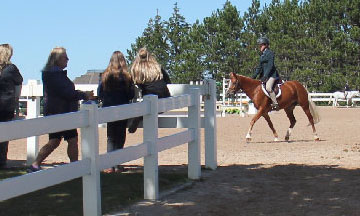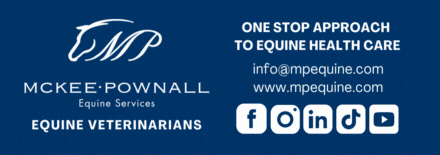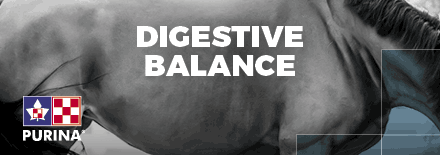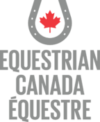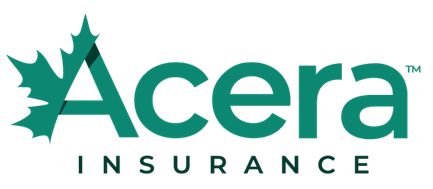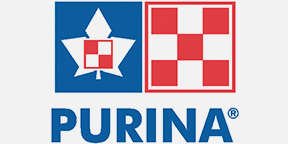June 26, 2013
EHV-1 Update: restrictions on Woodbine Barn 1 lifted. All Horses allowed to exit
ORC Manager of Veterinary Services Dr. Adam Chambers has announced that all restrictions placed on horses stabled in Woodbine’s Barn 1 are now removed, effective June 26, 2013.
The restrictions on Barn 3 horses were lifted on June 19. The last time a horse in Barn 1 tested positive was June 12, 2013. Twice daily temperature of all horses stabled at Woodbine must still be recorded and be available for inspection. Until further notice, horses with fevers of unknown origin are to be reported and isolated until two negative polymerase chain reaction (PCR) tests have been returned.
The infectious and serious nature of this disease prompted these measures and reinforced the need to protect Ontario’s equine athletes. As a standard practice, participants are reminded of the importance of establishing appropriate biosecurity measures. Racetrack management need to maintain aggressive disinfectant programs in ship-in barn areas. Further, trainers and their staff should adopt strict procedures and separate
equipment for each horse to minimize the likelihood of spreading infectious disease.
The Ontario Racing Commission (ORC) would like to recognize the cooperation of members of the racing community during this difficult period. In particular we thank all veterinarians, horse people, ORC staff and racetrack officials for their efforts and contribution.
——————————————————————
June 19, 2013
EHV-1 Update: restrictions on Woodbine Barn 3 lifted. Horses except Barn 1 allowed to exit
ORC Manager of Veterinary Services Dr. Adam Chambers announced that the restrictions on horses stabled in Woodbine’s Barn 3 are lifted. In addition, horses NOT stabled in Barn 1 are now allowed to exit Woodbine.
There have been two negative tests for EHV-1 for all horses in Barn 3 and as a result these horses may now train during normal training hours and race. While no horse in Barn 3 had at any time tested positive for EHV-1, the restrictions were initiated as a pony with direct contact with horses in Barn 1 was stabled in Barn 3.
The three horses from Barn 1 that had tested positive for EHV-1 are not allowed to leave their barn. All other Barn 1 horses will be allowed to train on the training track after the track closes to training for all other horses. If there is a second negative test for EHV-1 for all of the horses in Barn 1, their restrictions on racing and training will be lifted on June 26 2013.
After two negative tests for EHV-1 are received, the horses that had been stabled in isolation due to preliminary concerns will be allowed back to their respective barns
The ORC will continue to closely monitor the situation and any further developments will be reported.
For more information – or to speak with Dr. Duncan or Dr. Chambers – please call: 416 213-0520
——————————————————————
June 12, 2013
Notice to the Industry
Equine Herpes Case: Restrictions In Place. Racing To Continue At Woodbine
The Ontario Racing Commission (ORC) announced that there have been five confirmed reports of the neurotrophic form of EHV-1 in thoroughbreds residing in Barn 1 at Woodbine Racetrack. One horse was euthanized on June 10 after becoming recumbent with a fever. A second horse in the same barn (Barn 1) also had a fever and showed neurological signs. The second horse was transported to the Ontario Veterinary College for further evaluation and treatment.
Thoroughbred racing will continu at Woodbine. However, due to the infectious nature of this disease, the ORC has ordered the implementation of various infectious disease protocols to protect our equine athletes.
Effective immediately:
- In order to determine any further spread of the disease to horses in other barns, no horses are to exit Woodbine Racetrack without ORC approval for the next 7 days (June 19). This restriction may be reviewed based on the progression of the disease.
- In addition, no horse is allowed in or out of Barn 1 or Barn 3 for the next 7 days, including training. This restriction may be reviewed, based on the progression of the disease.
- All horses stabled at Woodbine must have their temperatures taken and recorded visibly on the horse’s stall door for inspection. Trainers with horses that clinical signs consistent with EHV-1 infection (including fever (101.5 F/38.5 C or above), respiratory signs (cough, nasal discharge and/or neurological signs) must report these finding to their veterinarian immediately.
Horse people who had horses at Woodbine Racetrack within the last 7 days should monitor their horses for any signs of illness.
Standardbred horses are not stabled at Woodbine Racetrack. As well, the standardbred racing meet concluded at Woodbine on May 20, 2013 and moved to Mohawk Raceway on May 23. Therefore the June 15 North American Cup at Mohawk will not be impacted by these measures.
The neurotrophic form of EHV-1 identified from these horses differs from the non-neurotrophic form identified from the standardbreds at Campbellville in May of this year.
To ensure best practices are in place to contain the disease, the ORC received input from the office of the Chief Veterinarian for Ontario, Ontario Ministry of Agriculture and Food (OMAF) and also worked closely with Woodbine management, veterinarians and horse people.
The ORC will continue to closely monitor the situation and any further developments will be reports.
For more information – or to speak with Dr. Duncan or Dr. Chambers – please call 416-213-0520.
What is EHV-1?
EHV-1 infection in horses can cause respiratory disease, abortion, neonatal foal death, and/or neurological disease. EHV-1 is not a federally reportable disease.
Occasionally this disease can create serious complications when it attacks the nervous system, causing a range of symptoms that can include weakness, hind end paralysis, inability to urinate, fever, and recumbency. This “neurologic form” of EHV occurs sporadically, and has been proven difficult to prevent even with appropriate vaccination protocols.
How is it transmitted?
EHV-1 is easily spread by sharing contaminated equipment, contact with an animal carrying the virus, or by the clothing, hands or equipment of visitors to farms who recently had contact with an infected horse.
Most exposed horses successfully fight the infection and show no signs of illness, but occasionally clinical disease will be evident. This usually develops between 2-10 days of exposure, and the horse can shed infectious particles in their nasal secretions for up to 2 weeks.
How can I protect my horses?
- Consult your veterinarian to discuss your horse’s vaccination needs.
- Keep in mind, however, that current EHV vaccines may reduce viral shedding but are not protective against the neurological form of the disease. Implementing routine biosecurity practices is the best way to minimize the spread of this disease.
- Quarantine any new horses arriving at your barn for 14-21 days. Monitor their temperatures twice daily and watch for clinical signs of the disease.
- If full quarantine is not possible, you can help prevent transmission by separating new or returning horses at one end of the barn, using separate grooming tools and tack and disinfecting stalls with bleach before mixing the new or returning horses with the rest of your herd.
What do I do if I suspect my horse may have the virus or has been exposed to it?
- Infected and exposed horses should be isolated immediately.
- Because infected horses may show no clinical signs, but still shed the virus, the temperature of suspect animals should be monitored twice daily for 14 -21 days and any abnormalities discussed with a veterinarian.
- Check for fever, which is one of the most consistent clinical signs and often appears before the development of other clinical signs.
ADDITIONAL RESOURCES
Equine Guelph
Vaccination Equi-Planner: http://www.equineguelph.ca/Tools/equiplanner.php#general_vacc_info
EHV-1 Health Alert: http://www.equineguelph.ca/pdf/healthflash/Health%20Flash%20ALERT_apr_2013.pdf
OMAFRA
Preventing Disease Spread – Personal Hygiene and Disinfectants around Horse Barns: http://www.omafra.gov.on.ca/english/livestock/horses/facts/prev-disease-spread.htm
Horses – Health Management and Biosecurity: http://www.omafra.gov.on.ca/english/livestock/horses/health.html
RESOURCES
McKee-Pownall Equine Services
